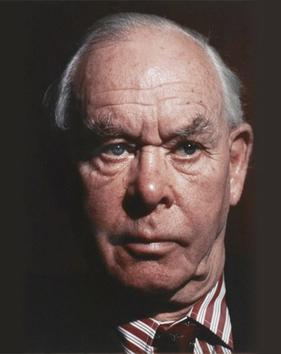
Jealousy generally refers to the thoughts or feelings of insecurity, fear, and concern over a relative lack of possessions or safety.

A relationship breakup, breakup, or break-up is the termination of a relationship. The act is commonly termed "dumping [someone]" in slang when it is initiated by one partner. The term is less likely to be applied to a married couple, where a breakup is typically called a separation or divorce. When a couple engaged to be married breaks up, it is typically called a "broken engagement". People commonly think of breakups in a romantic aspect, however, there are also non-romantic and platonic breakups, and this type of relationship dissolution is usually caused by failure to maintain a friendship.

An attachment theory is a psychological, evolutionary, and ethological theory concerning relationships between humans. The most important tenet is that young children need to develop a relationship with at least one primary caregiver for normal social and emotional development. The theory was formulated by psychiatrist and psychoanalyst John Bowlby (1907–1990).

Edward John Mostyn Bowlby, CBE, FBA, FRCP, FRCPsych was a British psychiatrist, and psychoanalyst, notable for his interest in child development and for his pioneering work in attachment theory. A Review of General Psychology survey, published in 2002, ranked Bowlby as the 49th most cited psychologist of the 20th century.
Affect theory is a theory that seeks to organize affects, sometimes used interchangeably with emotions or subjectively experienced feelings, into discrete categories and to typify their physiological, social, interpersonal, and internalized manifestations. The conversation about affect theory has been taken up in psychology, psychoanalysis, neuroscience, medicine, interpersonal communication, literary theory, critical theory, media studies, and gender studies, among other fields. Hence, affect theory is defined in different ways, depending on the discipline.

Sexual jealousy is a special form of jealousy in sexual relationships, based on suspected or imminent sexual infidelity. The concept is studied in the field of evolutionary psychology.

Social rejection occurs when an individual is deliberately excluded from a social relationship or social interaction. The topic includes interpersonal rejection, romantic rejection, and familial estrangement. A person can be rejected or shunned by individuals or an entire group of people. Furthermore, rejection can be either active by bullying, teasing, or ridiculing, or passive by ignoring a person, or giving the "silent treatment". The experience of being rejected is subjective for the recipient, and it can be perceived when it is not actually present. The word "ostracism" is also commonly used to denote a process of social exclusion.
Dependency need is "the vital, originally infantile needs for mothering, love, affection, shelter, protection, security, food, and warmth."

Silvan Solomon Tomkins was a psychologist and personality theorist who developed both affect theory and script theory. Following the publication of the third volume of his book Affect Imagery Consciousness in 1991, his body of work received renewed interest, leading to attempts by others to summarize and popularize his theories.
Caring in intimate relationships is the practice of providing care and support to an intimate relationship partner. Caregiving behaviours are aimed at reducing the partner's distress and supporting their coping efforts in situations of either threat or challenge. Caregiving may include emotional support and/or instrumental support. Effective caregiving behaviour enhances the care-recipient's psychological well-being, as well as the quality of the relationship between the caregiver and the care-recipient. However, certain suboptimal caregiving strategies may be either ineffective or even detrimental to coping.
In psychology, an affectional bond is a type of attachment behavior one individual has for another individual, typically a caregiver for their child, in which the two partners tend to remain in proximity to one another. The term was coined and subsequently developed over the course of four decades, from the early 1940s to the late 1970s, by psychologist John Bowlby in his work on attachment theory. The core of the term affectional bond, according to Bowlby, is the attraction one individual has for another individual. The central features of the concept of affectional bonding can be traced to Bowlby's 1958 paper, "The Nature of the Child's Tie to his Mother".
In psychology, the theory of attachment can be applied to adult relationships including friendships, emotional affairs, adult romantic and carnal relationships and, in some cases, relationships with inanimate objects. Attachment theory, initially studied in the 1960s and 1970s primarily in the context of children and parents, was extended to adult relationships in the late 1980s. The working models of children found in Bowlby's attachment theory form a pattern of interaction that is likely to continue influencing adult relationships.
Fear of commitment, also known as gamophobia, is the irrational fear or avoidance of long-term partnership or marriage. The term is sometimes used interchangeably with commitment phobia, which describes a generalized fear or avoidance of commitments more broadly.
The term emotional affair describes a type of relationship between people. The term often describes a bond between two people that mimics or matches the closeness and emotional intimacy of a romantic relationship while not being physically consummated. An emotional affair is sometimes referred to as an affair of the heart. An emotional affair may emerge from a friendship, and progress toward greater levels of personal intimacy and attachment.
Emotionally focused therapy and emotion-focused therapy (EFT) are a set of related approaches to psychotherapy with individuals, couples, or families. EFT approaches include elements of experiential therapy, systemic therapy, and attachment theory. EFT is usually a short-term treatment. EFT approaches are based on the premise that human emotions are connected to human needs, and therefore emotions have an innately adaptive potential that, if activated and worked through, can help people change problematic emotional states and interpersonal relationships. Emotion-focused therapy for individuals was originally known as process-experiential therapy, and it is still sometimes called by that name.

Maternal deprivation is a scientific term summarising the early work of psychiatrist and psychoanalyst John Bowlby on the effects of separating infants and young children from their mother. Although the effect of loss of the mother on the developing child had been considered earlier by Freud and other theorists, Bowlby's work on delinquent and affectionless children and the effects of hospital and institutional care led to his being commissioned to write the World Health Organization's report on the mental health of homeless children in post-war Europe whilst he was head of the Department for Children and Parents at the Tavistock Clinic in London after World War II. The result was the monograph Maternal Care and Mental Health published in 1951, which sets out the maternal deprivation hypothesis.

Attachment theory, originating in the work of John Bowlby, is a psychological, evolutionary and ethological theory that provides a descriptive and explanatory framework for understanding interpersonal relationships between human beings.
Trauma bonds are emotional bonds that arise from a cyclical pattern of abuse. A trauma bond occurs in an abusive relationship wherein the victim forms an emotional bond with the perpetrator. The concept was developed by psychologists Donald Dutton and Susan Painter.
Attachment theory and psychology of religion research explores the ways that a belief in God can fulfill the criteria of an attachment figure and examines how individual differences in attachment lead to correspondence or compensation pathways.
Theories of love can refer to several psychological and sociological theories:








